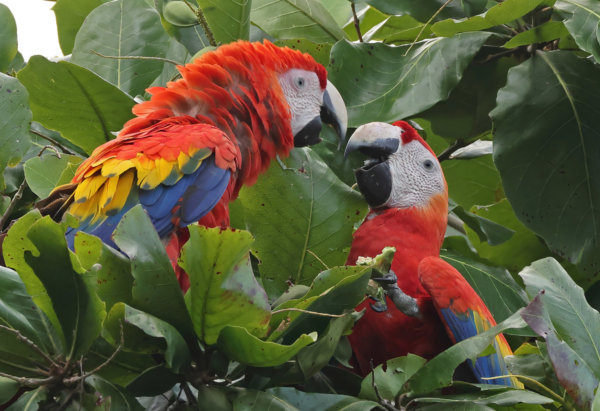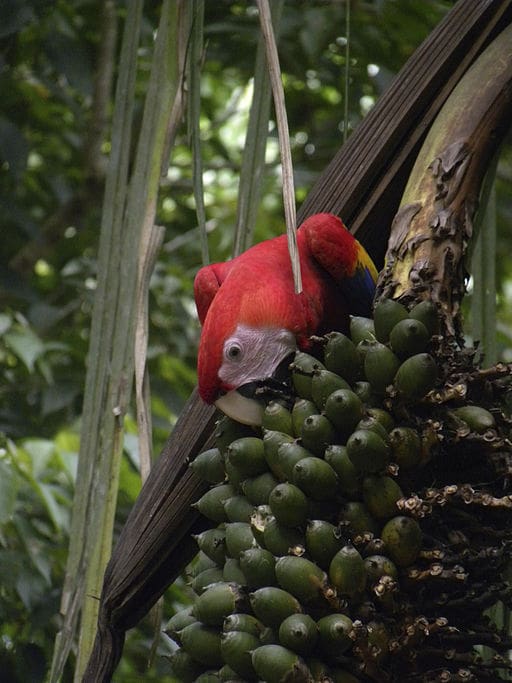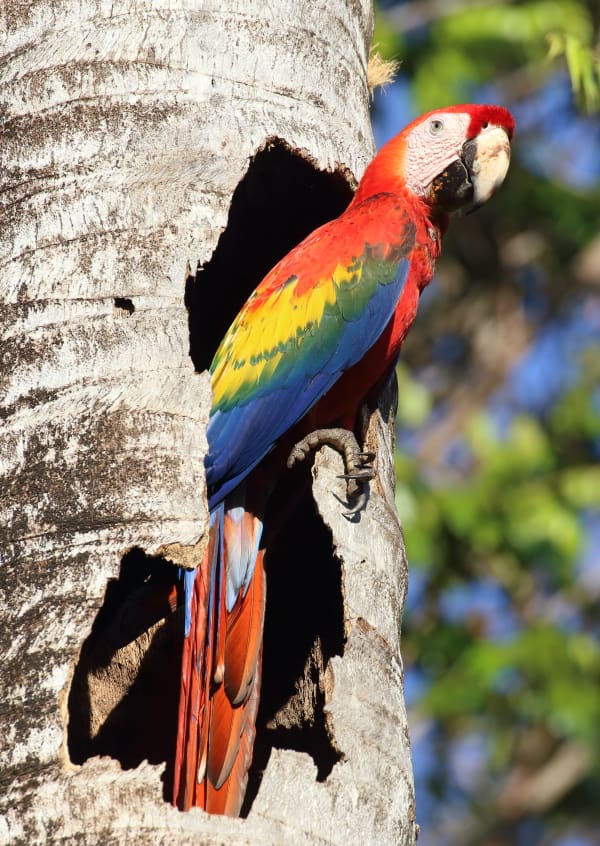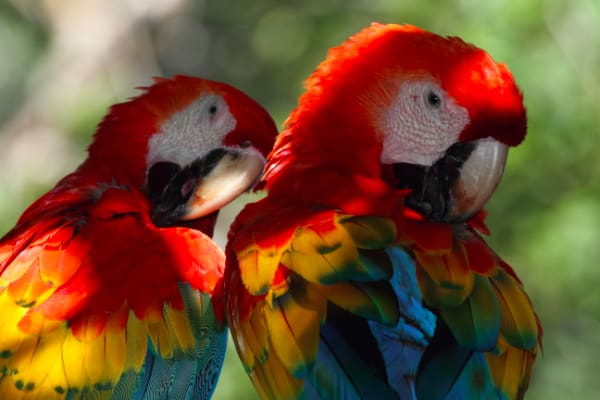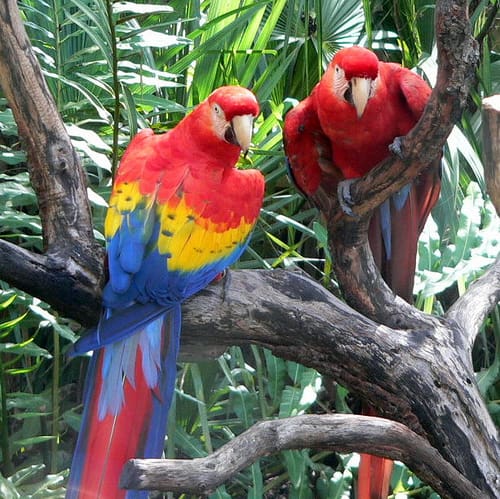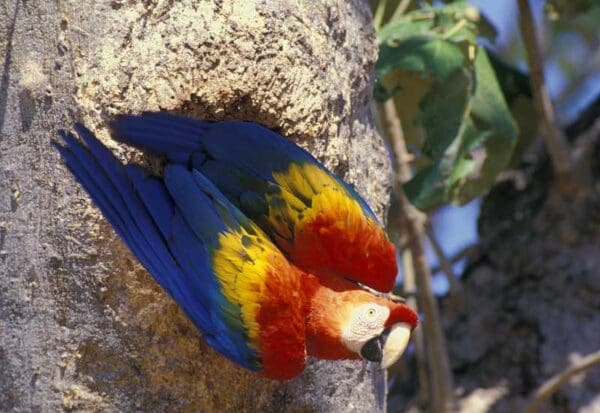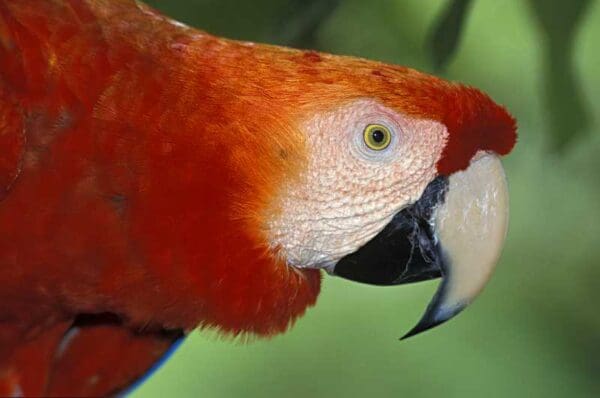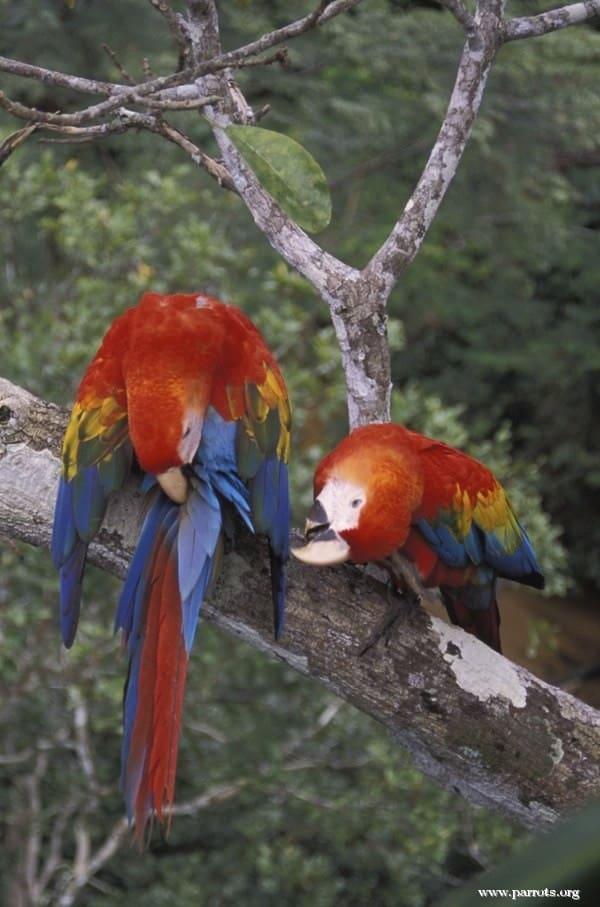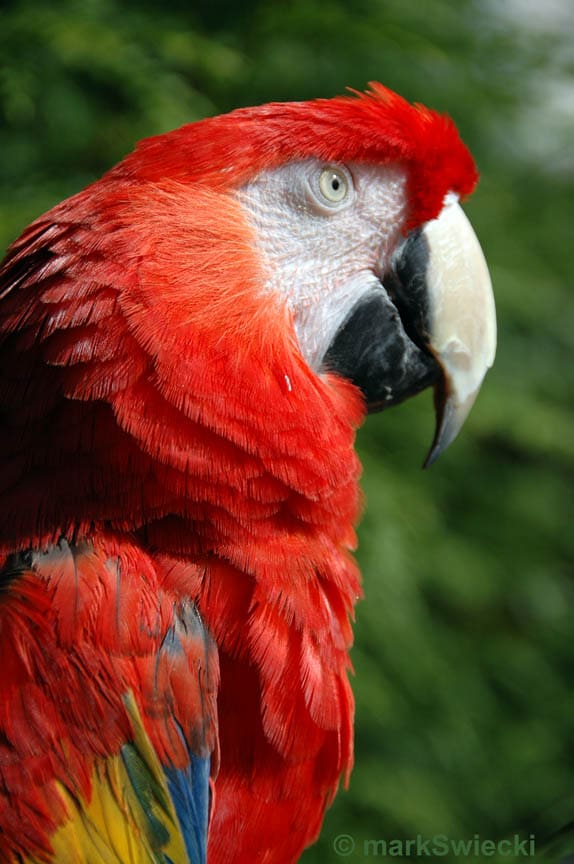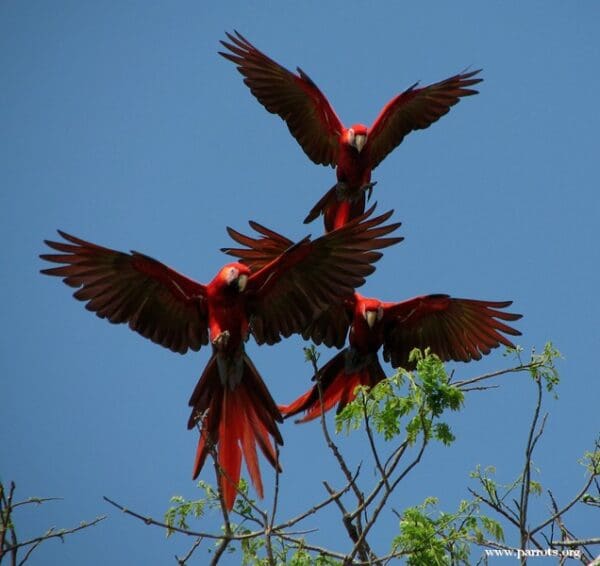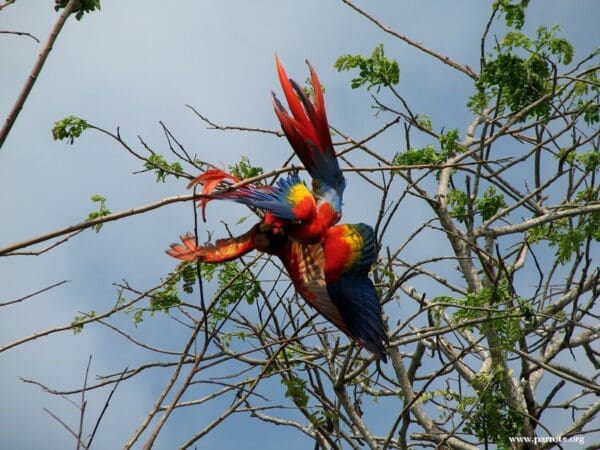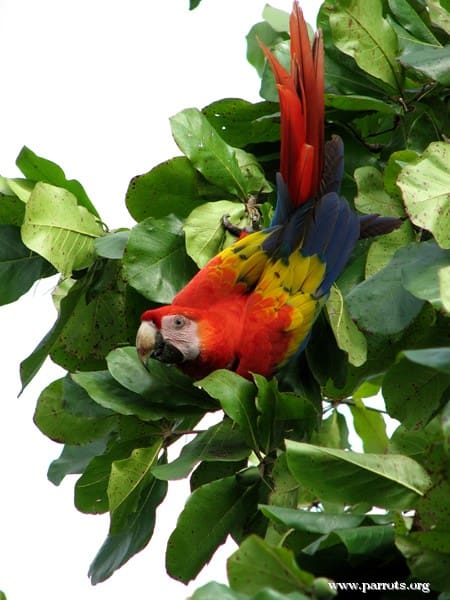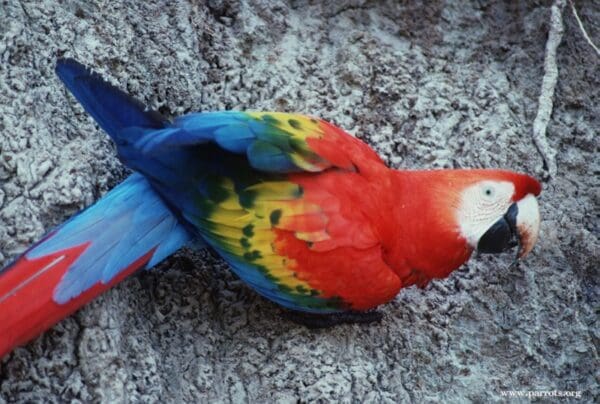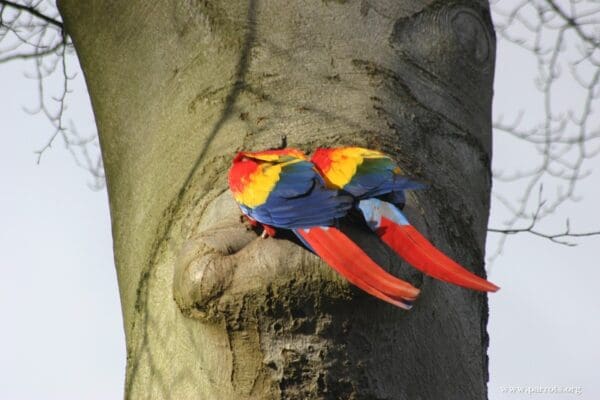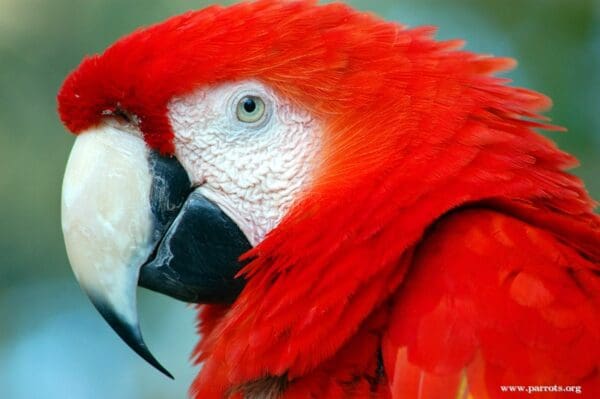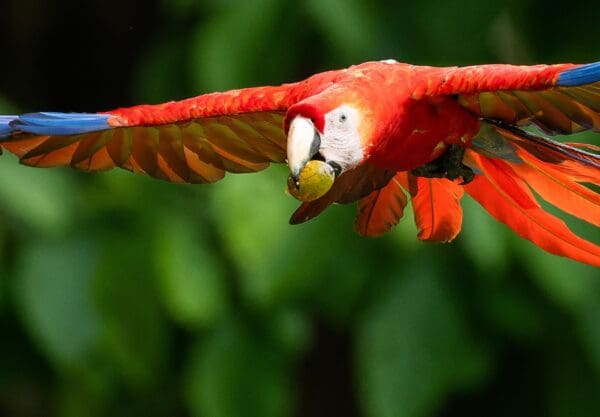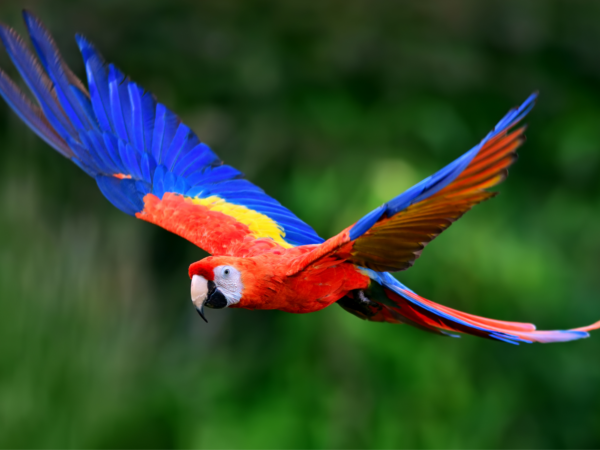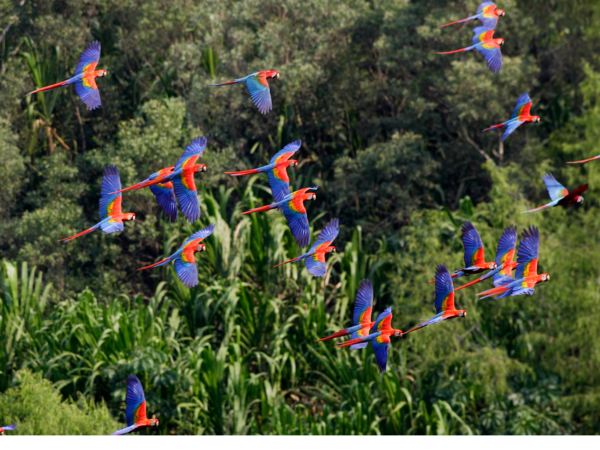Scarlet Macaw
Also known as:
Red-blue-and-yellow Macaw, Red-and-yellow Macaw, Red-breasted Macaw
Also known as:
Red-blue-and-yellow Macaw, Red-and-yellow Macaw, Red-breasted Macaw
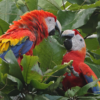
![© Oldcrookedjaw (Own work) [CC BY-SA 3.0] via Wikimedia Commons](https://parrots.org/wp-content/uploads/2023/01/wpt_Scarlet-Macaw_1092-48-100x100.jpg)
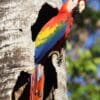
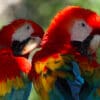
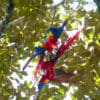
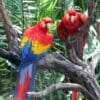

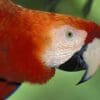
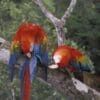
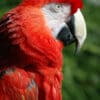
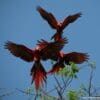

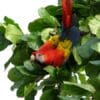
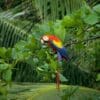
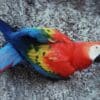
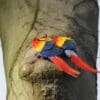
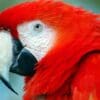


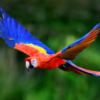
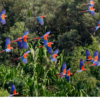
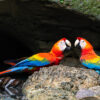
DID YOU KNOW?
Macaw species are included in six different genera (Anodorhynchus, Cyanopsitta, Ara, Orthopsittaca, Primolius and Diopsittaca).

Ara

macao
Size:
85 cm (33.1 in)
Weight:
1060-1123 g (37.1-39.3 oz)
Subspecies including nominate:
two: A. m. cyanoptera, A. m. macao
Colour Adult:
A.m. macao: Both adults in general red with blue lower back to tail coverts; yellow median and secondary wing coverts, sometimes tipped with green; red tail tipped with blue. Beak horn coloured on upper mandible with black on sides at base, lower grey/black. Cere bare, face white with thin feathered red stripes. Eye yellow.
A.m. cyanoptera: Both adults as in macao but median and secondary wing coverts tipped with blue; larger.
Colour Juvenile:
Immature as in adult but with shorter tail and grey eye. Beak paler grey on lower mandible.
Call:
Harsh, loud screeching calls; call more drawn out than that of Blue-and-yellow Macaw (Ara ararauna). Include a variety of screeches, gutteral squawks and growls.
More Information:
Content Sources:
CITES
Avibase
BirdLife International
Cornell Lab of Ornithology/Birds of the World
A Guide to Parrots of the World, Juniper and Parr, 1998
Parrots: Status Survey and Conservation Plan 2000-2004, Snyder, McGowan, Gilardi and Grajal, 2000.
Parrots of the World, Forshaw and Cooper, 1989. 2010 edition
Parrots of the World, Forshaw, 2006.
Parrots in Aviculture, Low, 1992.
Psittacine Aviculture, Schubot, Clubb and Clubb, 1992.
Avian Pediatric Seminar Proceedings, various authors, 1988.
Captive Status:
One of the more common macaws in captivity.
Longevity:
Up to 60 yrs.
Housing:
Should have access to a large enclosure (15 m or 49 ft long) in which to fly for part of the year.
Diet:
Soaked or sprouted sunflower seed; walnuts, peanuts, pecans, Brazil nuts, pine nuts; corn on the cob, banana, orange and other fruit. Complete kibble for macaws.
Enrichment:
Large macaw toys, chewables (fir, pine, willow or elder branches, heat sterilized pine cones), large perches, swings, ladders; regular access to bathing.
Nest Box Size:
Horizontal box, 16″ x 16′ x 48″ (40.2 cm x 40.2 cm x 122 cm) or 35 gal (9.2 L) pickle barrel, whiskey barrel.
Clutch Size:
2 to 4
Fledging Age:
About 105 days.
Hatch Weight:
—
Peak Weight:
—
Weaning Weight:
—
World Population:
50,000-500,000 individuals, decreasing.
IUCN Red List Status:
Least Concern
CITES Listing:
Appendix I
Threat Summary:
In Middle America, cyanopterus now survives only in the Lacandón Forest, Mexico, is confined to one area in Belize, is extinct in most of Guatemala save the Petén and also in El Salvador, and is nearly gone from the Pacific slope of Honduras and Nicaragua, although a relict population survives on the Cosigüina Peninsula. On the Caribbean side, perhaps 1000–1500 birds survive in Honduras and a population persists in E Nicaragua. The nominate has also suffered substantial declines in settled and developing areas. In many parts of its range the species is declining or locally extinct as a consequence of habitat loss and trapping pressure, with forest being lost at a rate of 9% over three generations. The impact of trapping has not been quantified but is assumed to be substantial given the macaws’ popularity as companion animals. Tentatively, population declines are therefore here placed in the band of 10-19% over three generations.
Range:
A. m. macao: Costa Rica on Pacific slope; S Panama, on Azuero Peninsula and Isla Coiba, then scattered through N South America, east of Andes, from Rio Magdalena valley, Colombia to Guianas and south to E Ecuador, E Peru, E Bolivia and N Mato Grosso, Brazil.
A.m. cyanoptera: Oaxaca and S Tamaulipas, SE Mexico; scattered to NE Nicaragua.
Habitat:
Lowland rainforest and savanna; in Mexico remote portions of humid forest; on Pacific slope in Honduras; Costa Rica deciduous and humid forest; Colombia in lowland rainforest and gallery forest; Venezuela in rainforest and savanna.
Wild Diet:
Feeds on seeds of Jacaranda, Dialium, Sclerolobium, Hymenaea, Caryocar, Licarria, Hevea, Guarea, Piptadenia, Porouma, Euterpe, Cedrela, Hura, Terminalia, Eschweilera and Sapium, flowers/nectar of Virola, Erythrina, Ochroma, Quararibea and Combretum, leaves of Laetia, Aspidosperma, Licania and Schizolobium; pulp/ fruit of Inga, Micropholis, Sterculia, Bursera, Ficus, Scheelea, Spondias, Dipteryx, Borismene, Anomospermum, Sorocea, Pseudolmedia and Ampelocera, fruits and/or seeds of Anacardium, Bernoullia, Brosimum, Enterolobium, Pithecellobium, Byttneria, Leonia, Couma and Goupia; fruit, seeds, bark and leaves of Ceiba; fruit, seeds and flowers of Tabebuia, arils of Virola and Cupania, sap of Clarisia; in Brazil Bertholettia, Lecythis and Syagrus fruit. In Central America birds eat Pinus caribaea seeds.
Ecology and Behaviour:
Found often near rivers throughout range; found from below 240 m (787 ft) in Mexico to up to 1100 m (3608 ft) in Honduras, 1500 m (4920 ft) in Costa Rica and 400-500 m (1312-1640 ft) in Colombia and Venezuela. Usually in pairs, parties of 3-4 or flocks up to 30 individuals. Roosts communally in tall trees.
Clutch and Egg Size:
2 to 4 elliptical eggs, 47.0 x 34.0 mm (1.8 x 1.3 in).
Breeding Season:
March in Mexico, April in Nicaragua; October–April in Costa Rica, March in French Guiana; October–March in C Brazil, November–April in Peru. Nest is in large natural cavity up in tall tree.
